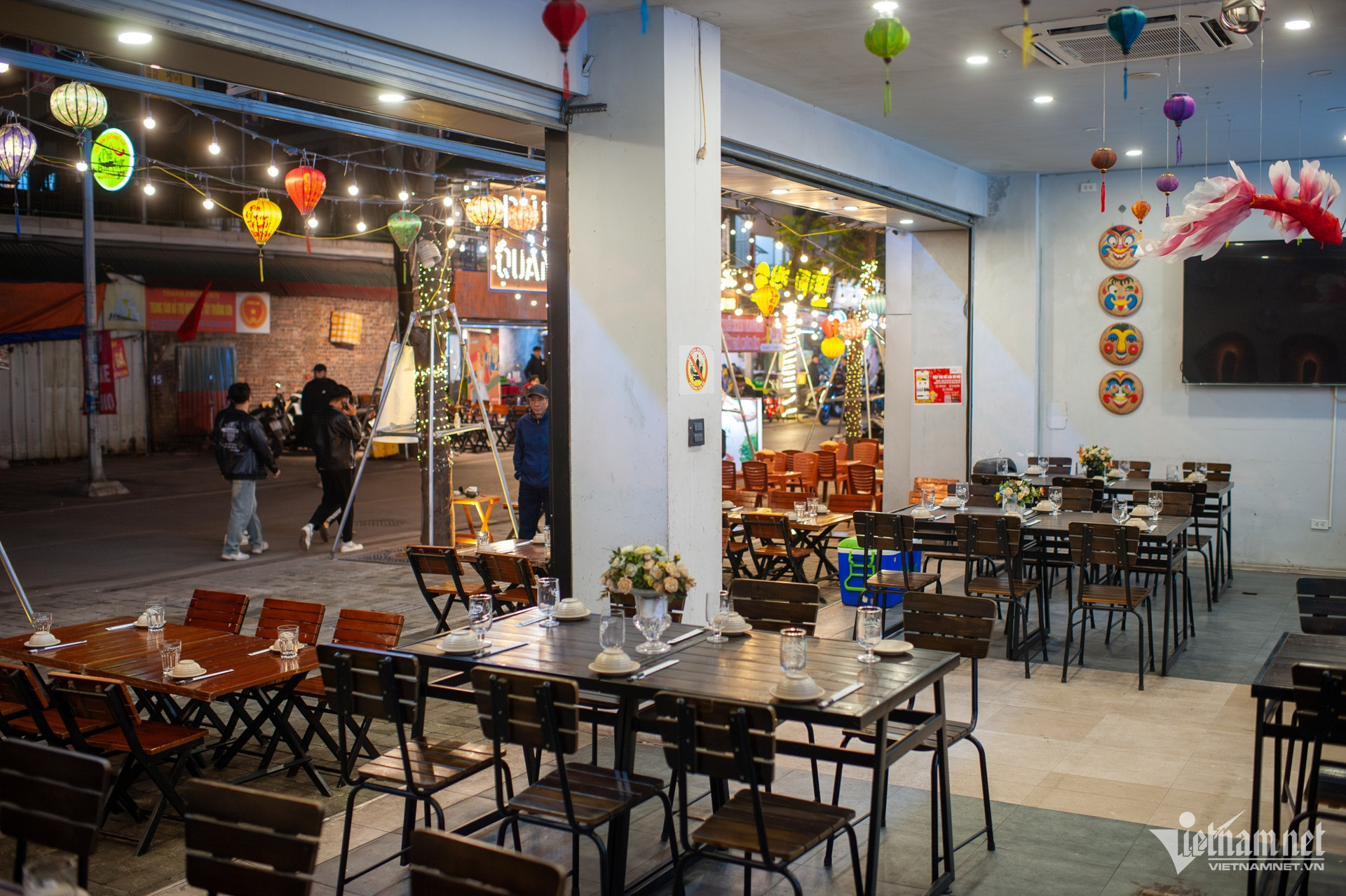A recent 5,000 VND (approx. $0.20) increase per bowl of pho has caused a sharp drop in customer traffic, leaving many vendors worried about long-term viability amid rising costs for rent and labor. Even large chains are grappling with mounting expenses, forcing price adjustments.
Struggling to stay afloat

Since March 1, a pho shop in Linh Dam (Hoang Mai District, Hanoi) raised its prices by 5,000 VND per bowl due to surging input costs, with a public notice asking for customer understanding.
The lowest price rose from 35,000 to 40,000 VND (about $1.40 to $1.60), while premium bowls now go for up to 70,000 VND ($2.80), excluding extras like fried dough sticks (10,000 VND per serving) and iced tea (5,000 VND per glass).
Shop owner Anh Tuan explained that the price hike was a reluctant decision driven by increasing costs. Though his eatery in a residential complex had enjoyed a stable customer base for over a year, the increase immediately led to a noticeable drop in foot traffic.
He noted that in tough times, customers tighten spending and look for cheaper alternatives. If revenue continues to decline, he fears he won’t be able to cover rising expenses for rent and staff.
Although he also sells via food delivery apps, the order volume remains low and part of the revenue is lost to platform fees.
Nguyen Thi Hoa from Thanh Xuan District, Hanoi, recently closed her café after a prolonged struggle with losses. Originally a lemon tea shop, her business was hit hard by COVID-19. When the trend faded, she shifted to a student-friendly café model, but was soon overwhelmed by competition from a flood of beverage brands. As customer numbers dwindled, Hoa had no choice but to shut down when her lease ended.
Tight competition, rising costs
Phung Anh The, founder of Maycha Milk Tea, observed fierce competition as low-cost eateries cut corners with cheap ingredients to attract price-sensitive customers. Changing consumer behavior is pushing businesses to rethink their strategies.
It’s not just small vendors facing challenges. Larger chains like Highlands Coffee have increased prices by 10-15%, drawing backlash from customers.
Starbucks and The Coffee House have closed multiple locations, and The Coffee House was recently acquired by Golden Gate. VNDirect, meanwhile, is looking to divest from restaurant chains like King BBQ and Thai Express.
The cost pressure dilemma
Nguyen Thai Binh, co-founder of Concepts Academy, cited macroeconomic factors in the 2024 spike in input costs. Global inflation, economic volatility, tighter import regulations, and political instability have driven up fuel and shipping costs.
Climate change has also disrupted agricultural supply, leading to reduced domestic availability and higher prices for coffee, sugar, rice, and vegetables - much of which is now being exported.
At the same time, consumers are cutting back on dining expenses. A recent iPOS report found that the most common spending range for breakfast is 21,000-30,000 VND, lunch at 31,000-50,000 VND, and drinks under 35,000 VND.
In 2024, many underperforming eateries closed under the strain of declining purchasing power and high operating costs. Nevertheless, the total number of food and beverage outlets in Vietnam is projected to reach 323,010 by year-end, up 1.8% year-on-year.
Around 44.8% of businesses reported raw material costs making up over 30% of their sale prices, while 6.2% said costs exceed 50%, severely impacting profit margins.
Under this pressure, 49.2% of F&B businesses plan to raise prices in 2025 to manage costs. But raising prices isn’t easy.
Striking a balance between price, profit, and consumer affordability will be a key survival strategy in the increasingly competitive landscape.
Do Duy Thanh, Director of FnB Director, noted that Vietnam’s food and beverage sector could rebound in 2025 thanks to a growing appetite for culinary experiences and tourism.
However, this revival will be tempered by escalating operational costs and tough competition from both local and international brands.
Nguyen Thai Binh emphasized that price increases must be carefully considered. Input costs are soaring, but consumer purchasing power is shrinking. Sudden hikes could reduce sales as customers become more cautious.
Instead of blanket price increases, businesses should consider cost optimization strategies - such as renegotiating with suppliers, adjusting recipes or portion sizes, and targeting specific customer segments.
If prices must be raised, a flexible pricing approach based on region or customer type, coupled with enhanced product value, can help maintain appeal.
Despite current headwinds, Vietnam’s food and beverage sector is expected to grow by 9.6% in 2025. Revenue from F&B chains is projected to reach 55.2 trillion VND (approx. $2.2 billion), up 14.4% from 2024.
Duy Anh